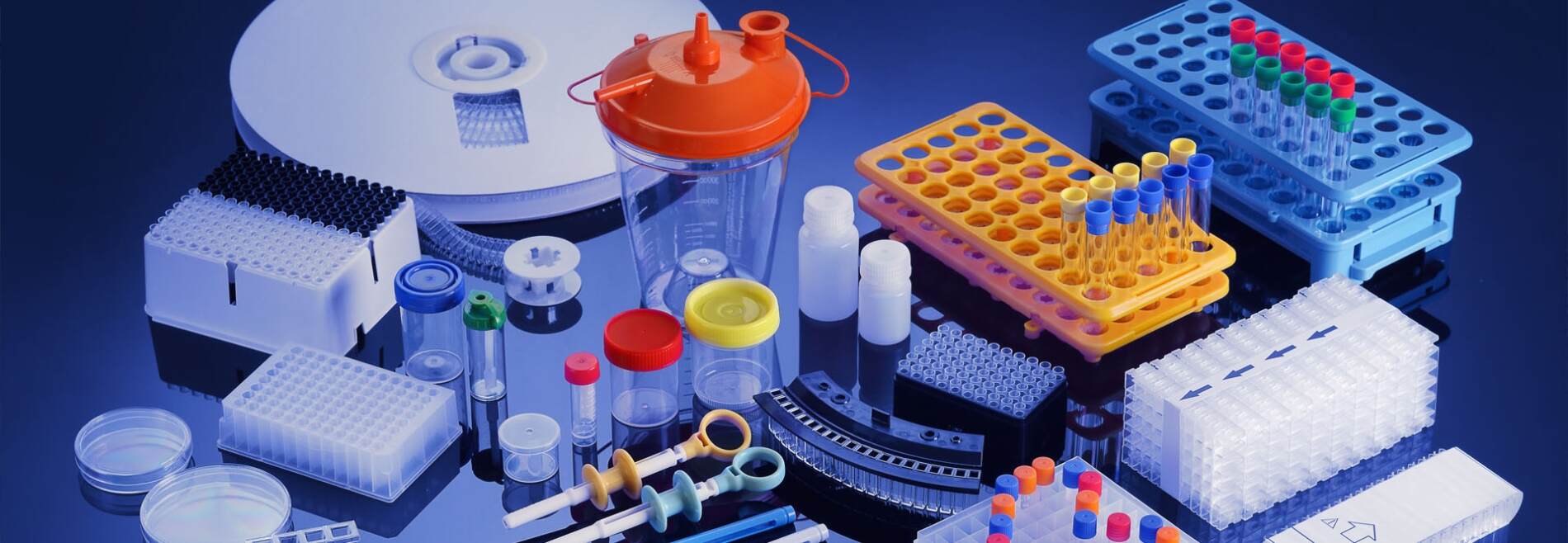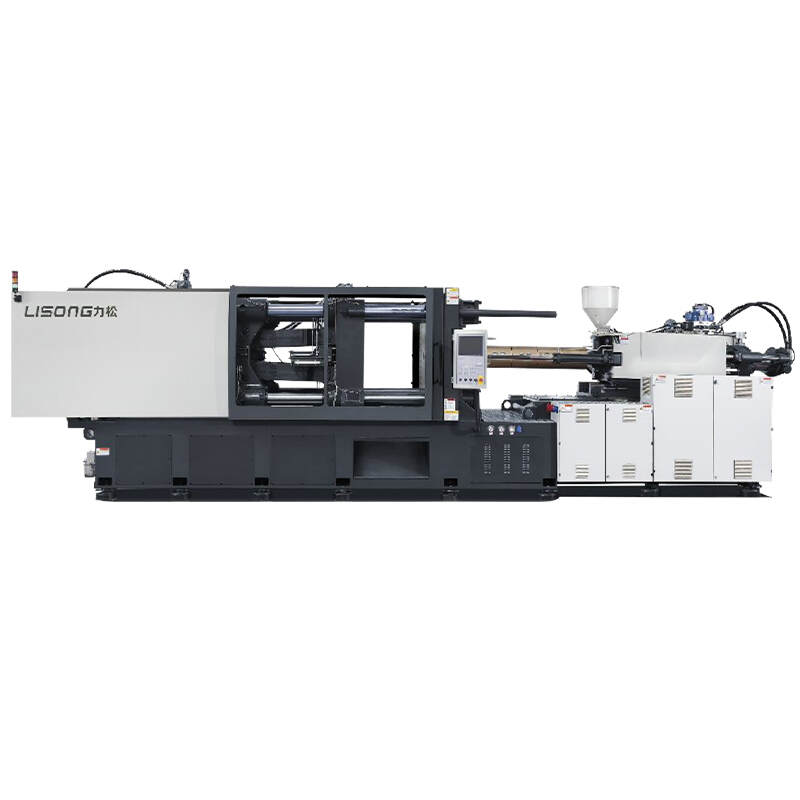Email format error
Email cannot be empty
Email already exists
6-20 characters(letters plus numbers only)
The password is inconsistent
Please enter the email address you’d like your password reset information sent to.
Email format error
Email cannot be empty
Email does not exist
Reset account password
For the account
6-20 characters(letters plus numbers only)
The password is inconsistent
Reset success
Your password was reset. You can log in using your new password.
Login

Plastic Injection Moulding Machine Manufacturer
Latest Blog

Plastic Injection Molding for Medical Device Market
2023-11-02 14:26:28
In advancing medical industry, the demand for high-quality and cost-effective medical devices is on the rise. Plastic injection molding has emerged as a game-changing technology, enabling manufacturers to meet these demands efficiently. This blog explores the significant impact of plastic injection molding on the medical device market, highlighting its benefits, applications, and future prospects.
I. Understanding Plastic Injection Molding for Medical Device Market
Plastic injection molding is a manufacturing process that involves injecting molten plastic into a mold cavity. It is widely used in the production of various medical devices due to its versatility and efficiency. This process allows for the creation of complex and intricate designs with high precision and consistency, making it ideal for medical applications.

II. Unveiling the Benefits of Plastic Injection Molding for Medical Devices
A. Precision and Consistency in Manufacturing
Plastic injection molding ensures precise and consistent production of medical devices, meeting the stringent requirements of the industry. The ability to create intricate details and tight tolerances guarantees the accuracy and reliability of the final products.
B. Enhanced Design Flexibility
With plastic injection molding, medical device manufacturers have the freedom to design complex geometries and incorporate intricate features. This flexibility enables the production of devices that meet specific medical requirements, such as ergonomic designs and customized functionalities.
C. Cost-Effectiveness and Time Efficiency
Plastic injection molding offers cost-effective solutions for medical device production. The high production rates, minimal material waste, and efficient automation contribute to reduced manufacturing costs. Additionally, the fast cycle times of injection molding ensure quick turnaround, meeting the market demands promptly.
D. Superior Quality and Durability
Medical devices must meet strict quality standards to ensure patient safety. Plastic injection molding enables the production of devices with excellent structural integrity, durability, and resistance to chemicals and sterilization processes. This ensures the longevity and reliability of medical devices throughout their intended use.
E. Compliance with Stringent Regulatory Standards
The medical device industry is highly regulated, requiring manufacturers to adhere to strict quality and safety standards. Plastic injection molding allows for the production of devices that comply with these regulations, ensuring patient safety and regulatory compliance.
III. Applications of Plastic Injection Molding in the Medical Device Market
A. Surgical Instruments and Equipment
Plastic injection molding is widely used in the production of surgical instruments and equipment, including forceps, syringes, surgical trays, and catheters. The ability to create complex shapes and incorporate ergonomic features enhances the functionality and usability of these devices.
B. Implants and Prosthetics
Plastic injection molding enables the production of implants and prosthetics with precise dimensions and customized designs. This technology allows for the creation of patient-specific implants, improving comfort, fit, and overall patient satisfaction.
C. Diagnostic Devices
The production of diagnostic devices, such as test kits, lab-on-a-chip devices, and medical imaging components, greatly benefits from plastic injection molding. The ability to manufacture intricate and precise components ensures accurate and reliable diagnostic results.
D. Drug Delivery Systems
Plastic injection molding plays a crucial role in the production of drug delivery systems, including syringes, inhalers, and infusion devices. The precise control over dosage, ease of use, and compatibility with various medications make plastic injection molding an ideal choice for these applications.
E. Laboratory and Research Equipment
Plastic injection molding is widely utilized in the production of laboratory and research equipment, such as pipettes, microplates, and sample holders. The ability to create complex and precise components enhances the efficiency and accuracy of scientific experiments and analysis.
IV. Future Prospects and Innovations in Plastic Injection Molding for Medical Devices
A. Advancements in Material Science
Continuous advancements in material science enable the development of new biocompatible and sterilizable materials suitable for medical device production. These innovations expand the possibilities of plastic injection molding in the medical field.
B. Integration of Automation and Robotics
The integration of automation and robotics in plastic injection molding processes enhances productivity, reduces human error, and ensures consistent quality. This trend is expected to continue, further improving the efficiency and reliability of medical device manufacturing.
C. 3D Printing and Additive Manufacturing
The combination of plastic injection molding with 3D printing and additive manufacturing technologies opens up new avenues for rapid prototyping, customization, and small-scale production of medical devices. This integration allows for faster development cycles and personalized healthcare solutions.
D. Customization and Personalization
The demand for personalized medical devices is growing, and plastic injection molding enables manufacturers to meet this demand efficiently. The ability to create patient-specific designs and tailor-made solutions enhances patient comfort, treatment outcomes, and overall satisfaction.
E. Sustainable and Eco-Friendly Solutions
As sustainability becomes a global priority, plastic injection molding is evolving to incorporate eco-friendly materials and processes. The development of biodegradable and recyclable plastics, as well as energy-efficient manufacturing techniques, ensures a greener approach to medical device production.
V. Conclusion: Embracing the Potential of Plastic Injection Molding for Medical Devices
In conclusion, plastic injection molding has revolutionized the medical device market, offering unparalleled benefits in terms of precision, design flexibility, cost-effectiveness, and compliance with regulatory standards. As the industry continues to evolve, embracing the potential of plastic injection molding will pave the way for innovative solutions, improved patient care, and a sustainable future.
I. Understanding Plastic Injection Molding for Medical Device Market
Plastic injection molding is a manufacturing process that involves injecting molten plastic into a mold cavity. It is widely used in the production of various medical devices due to its versatility and efficiency. This process allows for the creation of complex and intricate designs with high precision and consistency, making it ideal for medical applications.

II. Unveiling the Benefits of Plastic Injection Molding for Medical Devices
A. Precision and Consistency in Manufacturing
Plastic injection molding ensures precise and consistent production of medical devices, meeting the stringent requirements of the industry. The ability to create intricate details and tight tolerances guarantees the accuracy and reliability of the final products.
B. Enhanced Design Flexibility
With plastic injection molding, medical device manufacturers have the freedom to design complex geometries and incorporate intricate features. This flexibility enables the production of devices that meet specific medical requirements, such as ergonomic designs and customized functionalities.
C. Cost-Effectiveness and Time Efficiency
Plastic injection molding offers cost-effective solutions for medical device production. The high production rates, minimal material waste, and efficient automation contribute to reduced manufacturing costs. Additionally, the fast cycle times of injection molding ensure quick turnaround, meeting the market demands promptly.
D. Superior Quality and Durability
Medical devices must meet strict quality standards to ensure patient safety. Plastic injection molding enables the production of devices with excellent structural integrity, durability, and resistance to chemicals and sterilization processes. This ensures the longevity and reliability of medical devices throughout their intended use.
E. Compliance with Stringent Regulatory Standards
The medical device industry is highly regulated, requiring manufacturers to adhere to strict quality and safety standards. Plastic injection molding allows for the production of devices that comply with these regulations, ensuring patient safety and regulatory compliance.
III. Applications of Plastic Injection Molding in the Medical Device Market
A. Surgical Instruments and Equipment
Plastic injection molding is widely used in the production of surgical instruments and equipment, including forceps, syringes, surgical trays, and catheters. The ability to create complex shapes and incorporate ergonomic features enhances the functionality and usability of these devices.
B. Implants and Prosthetics
Plastic injection molding enables the production of implants and prosthetics with precise dimensions and customized designs. This technology allows for the creation of patient-specific implants, improving comfort, fit, and overall patient satisfaction.
C. Diagnostic Devices
The production of diagnostic devices, such as test kits, lab-on-a-chip devices, and medical imaging components, greatly benefits from plastic injection molding. The ability to manufacture intricate and precise components ensures accurate and reliable diagnostic results.
D. Drug Delivery Systems
Plastic injection molding plays a crucial role in the production of drug delivery systems, including syringes, inhalers, and infusion devices. The precise control over dosage, ease of use, and compatibility with various medications make plastic injection molding an ideal choice for these applications.
E. Laboratory and Research Equipment
Plastic injection molding is widely utilized in the production of laboratory and research equipment, such as pipettes, microplates, and sample holders. The ability to create complex and precise components enhances the efficiency and accuracy of scientific experiments and analysis.
IV. Future Prospects and Innovations in Plastic Injection Molding for Medical Devices
A. Advancements in Material Science
Continuous advancements in material science enable the development of new biocompatible and sterilizable materials suitable for medical device production. These innovations expand the possibilities of plastic injection molding in the medical field.
B. Integration of Automation and Robotics
The integration of automation and robotics in plastic injection molding processes enhances productivity, reduces human error, and ensures consistent quality. This trend is expected to continue, further improving the efficiency and reliability of medical device manufacturing.
C. 3D Printing and Additive Manufacturing
The combination of plastic injection molding with 3D printing and additive manufacturing technologies opens up new avenues for rapid prototyping, customization, and small-scale production of medical devices. This integration allows for faster development cycles and personalized healthcare solutions.
D. Customization and Personalization
The demand for personalized medical devices is growing, and plastic injection molding enables manufacturers to meet this demand efficiently. The ability to create patient-specific designs and tailor-made solutions enhances patient comfort, treatment outcomes, and overall satisfaction.
E. Sustainable and Eco-Friendly Solutions
As sustainability becomes a global priority, plastic injection molding is evolving to incorporate eco-friendly materials and processes. The development of biodegradable and recyclable plastics, as well as energy-efficient manufacturing techniques, ensures a greener approach to medical device production.
V. Conclusion: Embracing the Potential of Plastic Injection Molding for Medical Devices
In conclusion, plastic injection molding has revolutionized the medical device market, offering unparalleled benefits in terms of precision, design flexibility, cost-effectiveness, and compliance with regulatory standards. As the industry continues to evolve, embracing the potential of plastic injection molding will pave the way for innovative solutions, improved patient care, and a sustainable future.
Contact us

